Need to know when to prune fruit trees? Experts reveal the best time of year to complete this task
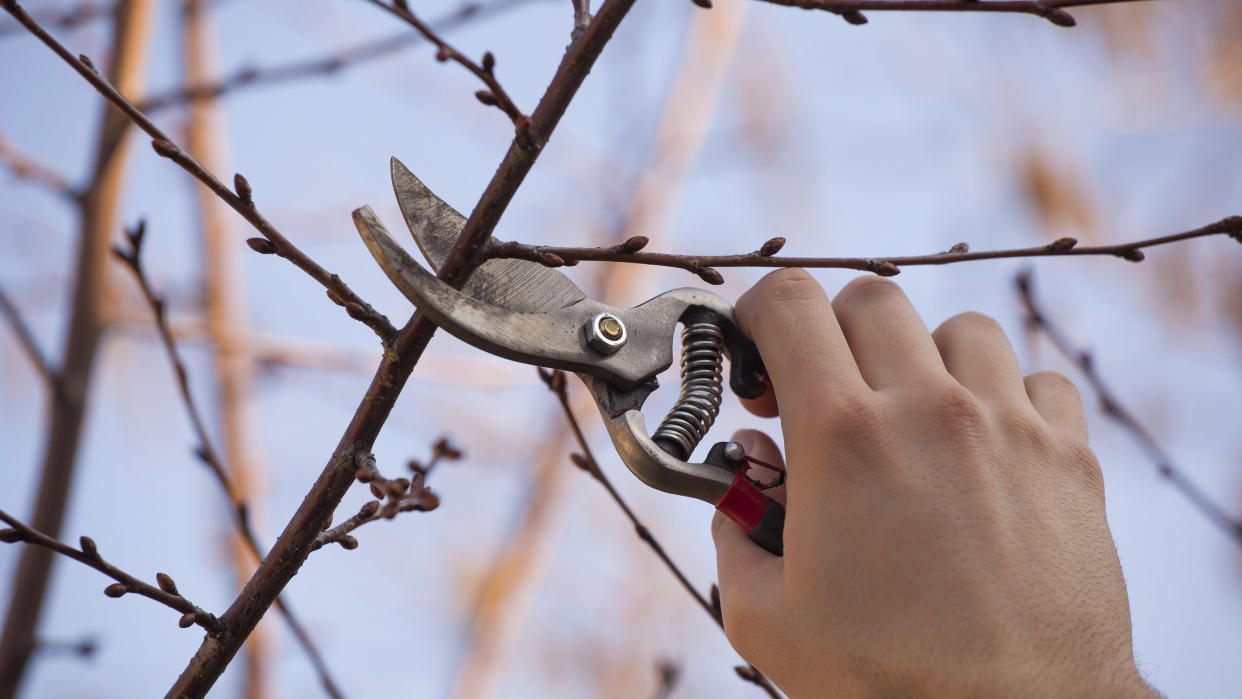
If you’re wondering when to prune fruit trees, the answer is that it depends what fruit tree you have and what your goals are.
Do you have a young tree that needs nurturing into bearing fruit? Perhaps you have an established tree that has too much leafy growth and not enough fruit. Does your tree look healthy or are there any weak and diseased branches?
Pruning fruit trees is a task that is probably most commonly associated with winter. And, as you'll discover, there are many reasons why cutting back in winter is a good idea. However, you'll also find that this isn't the solution for all fruit trees, and a summer trim has its own unique set of benefits associated.
Pruning fruit trees needn’t be daunting – once you understand the best time to do it, you’ll soon be snipping away like a pro.
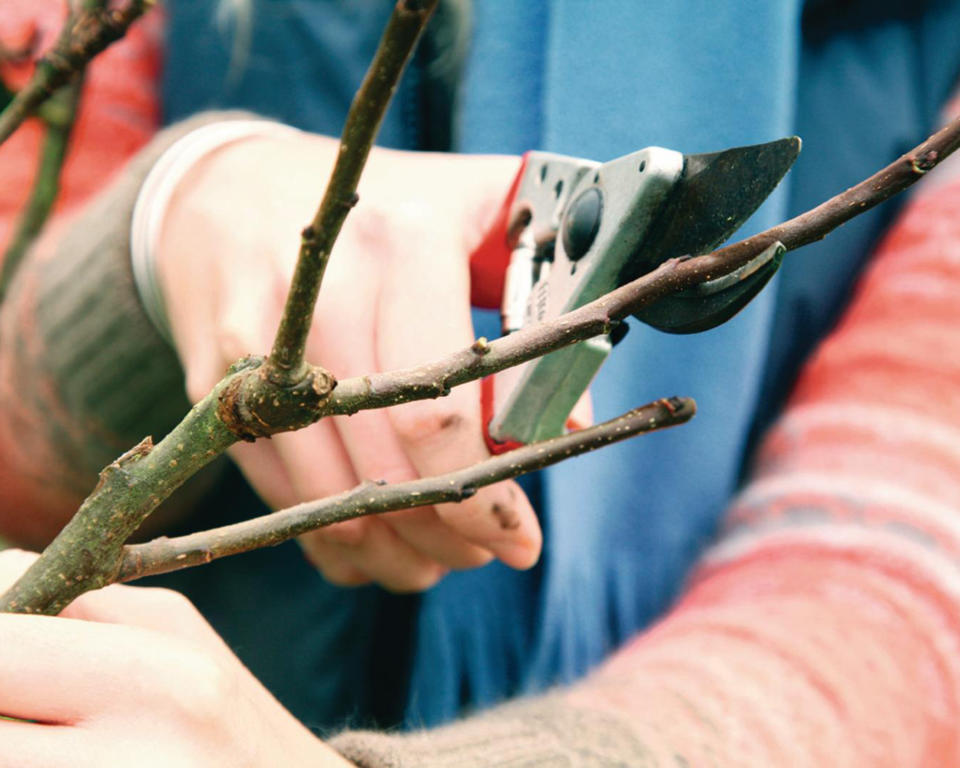
Learn when to prune fruit trees for the best results
If you're considering when to prune fruit trees, the first question to ask yourself is do you have a stone fruit tree or a pip fruit tree? The general rule is ‘pip fruits’ – apples, pears, quince and so on – are pruned in winter while ‘stone fruits’ are pruned in summer.
This is because stone fruit trees like plums, cherries, peaches and the like, are susceptible to silver leaf infection and bacterial canker, both of which favor damp conditions. Pruning stone fruit trees during the warmer, drier months of summer (after fruiting) means you’ll minimize the risk of these trees succumbing to disease.
Pruning fruit trees in winter
‘Pip’ fruit trees like apples and pears are pruned in winter. By pruning them in winter, just before dormancy breaks, it means you can rest assured that they will soon be able to heal their pruning wounds, and focus all their energy on the growth of the best branches.
'The reasons to prune in winter are manifold,' explains Bob Flowerdew, Amateur Gardening's organic gardening expert. 'First, pruning backyard trees once the sap goes down means fewer resources are taken away than they would be if you leave it until the sap is rising, and the buds start to swell towards the end of winter.'
'There is little point pruning after bud burst', says Richard Borrie of Orange Pippin Fruit Trees, 'as the rejuvenating benefits will be reduced'. It's also easier to see where to make a cut on bare branches.
It’s better for plants to lose top growth sooner than later, as this 'reduces their chances of windrock damage and breakages,' says Bob. 'Finally plants expect winter damage and so are equipped to deal with it.
'Trained fruit such as espalier apples and pears will need doing in winter, as if these are left they soon lose their form – cut back almost all their shoots to stubs only, leaving those needed to extend the frameworks,' adds Bob.

Pruning fruit trees in summer
If there’s too much leafy growth on your tree and not enough quality fruit, then summer pruning can come to the rescue. 'Summer pruning de-invigorates the tree. You are removing leaves so the tree has less energy,' says Richard Borrie.
'Pruning during summer can also allow light into the tree, which will improve fruit color and possibly flavor. It's a good technique for managing the size of a tree for a small garden, and is particularly useful for espalier-trained apple and pear trees,' says Richard.
Bob Flowerdew adds: 'When you prune in summer, you can redirect growth in your favor – for more fruit, not wood. Furthermore, the stone-fruit family (apricots, cherries, peaches and plums) can only safely be pruned in summer to avoid letting in silver leaf disease.'
'For most fruit trees, summer pruning is simple: you cut off half to three quarters of almost every young shoot. In so doing you check their growth (producing less new wood), and they make more flower buds instead,' says Bob.
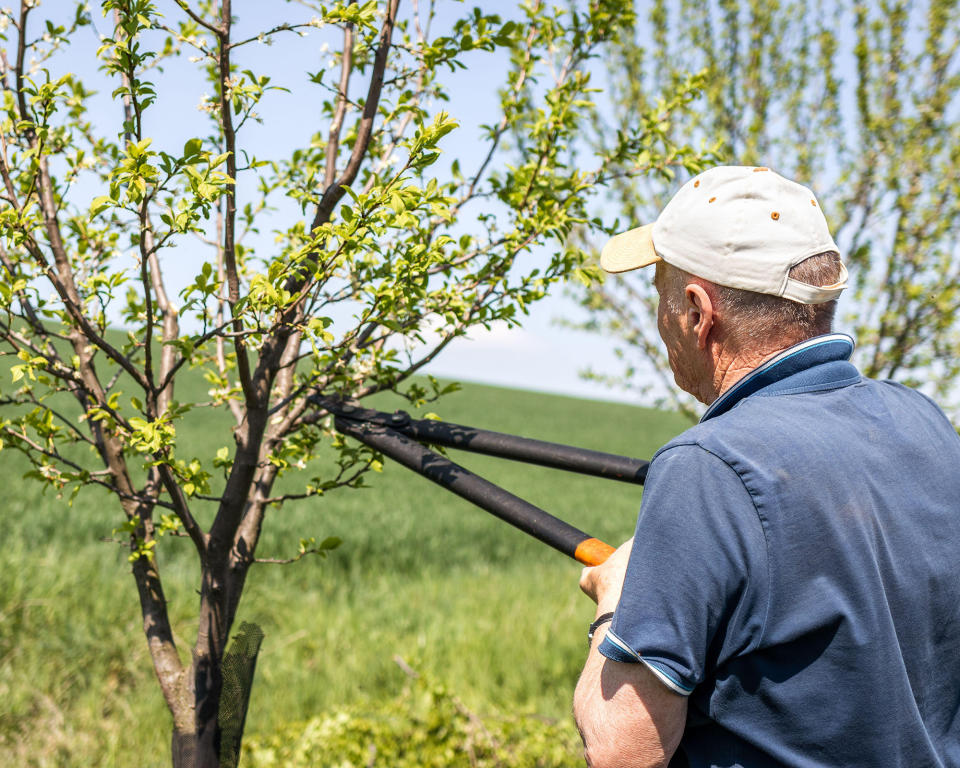
When to prune young fruit trees
All young fruit trees (pip and stone) require something called ‘formative pruning’. This is where you cut back the central ‘leader’ branch and shorten the ends of the spreading branches to create strong framework.
Whether you plant bare root trees or go for a slightly more mature potted specimen, how and when fruit trees are pruned during their first four years of life will determine their shape and fruiting ability when they’re older.
For apples and pears, formative pruning should be carried out in winter, while stone fruits should be pruned in spring before bud burst – but switch to summer pruning once they’re established.

When to prune established fruit trees
Regular light pruning of established pip trees (5 years and older) during winter is best practice to keep the center of the canopy open, particularly good if you use yours as one of the best trees for privacy. This will also promote growth and fruiting buds.
If you forget to prune your tree one year, don’t panic, this won’t have any serious consequences. 'In a garden situation this is unlikely to cause any long-term problems,' Richard Borrie reassures us.
'Indeed, there’s an argument that too little pruning is better than too much. There are also several apple varieties which bear apples on the tips of the shoots, or partially on the tips. These varieties generally don't need pruning so are good low-maintenance trees. Most quinces are also tip-bearers.'
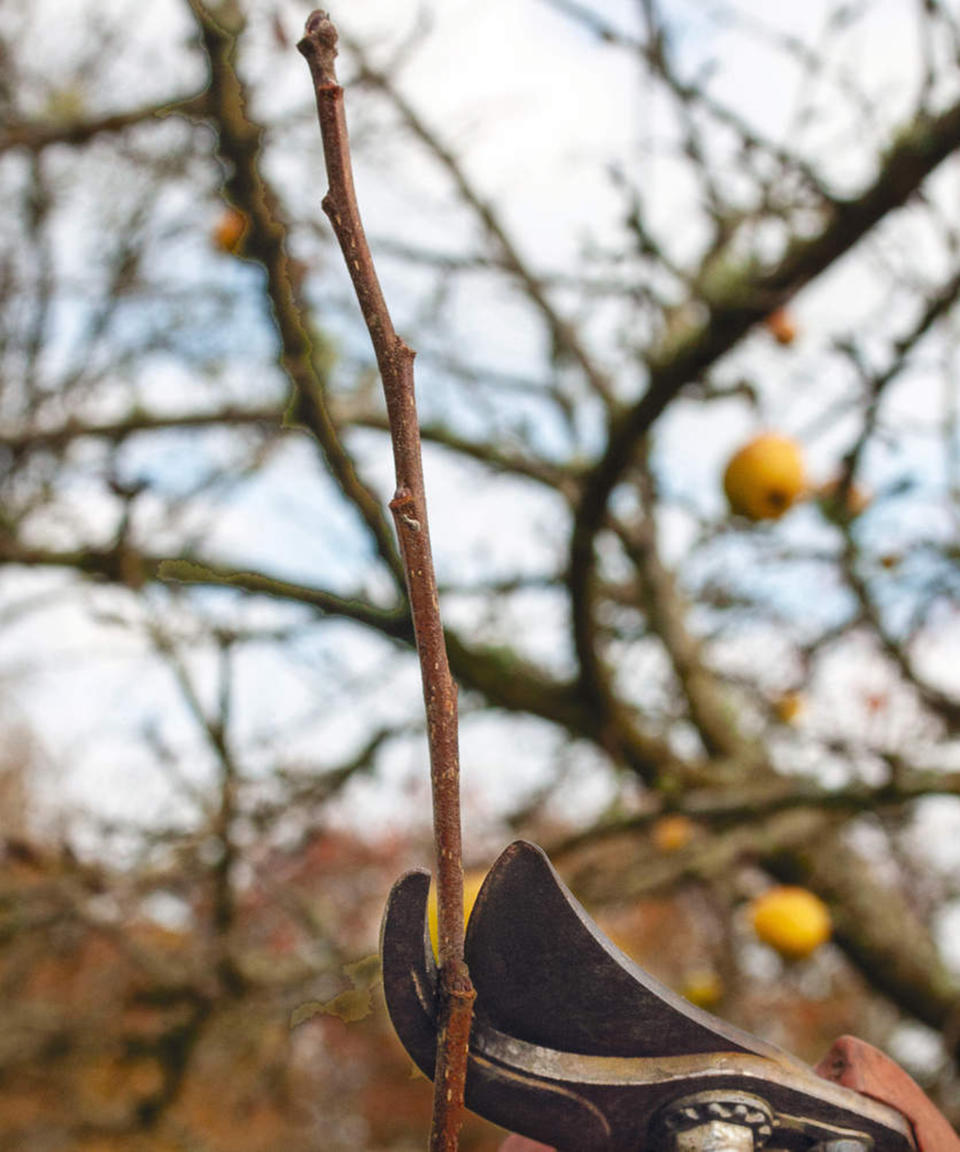
The best time to prune fruit trees by variety
Apples and pears: Trees should be pruned with the best secateurs every winter to encourage new shoots and fruiting wood for the next season. Trained apples and pears (espaliers, fans and cordons) need summer pruning (mid-summer, ideally) to reduce growth and encourage fruiting wood, and then again in winter to keep their shape and remove any damaged or crossing branches.
Medlar: Prune young trees in winter as you would apples and pears, creating a vase-shaped main structure. Established trees don’t require much pruning – just remove any dead, diseased and dying branches, as well as any vigorous upright stems from the middle of the tree to keep the center open.
Quince: Pruning should be carried out during winter. Try to create a good basic framework when plants are young, otherwise these trees quickly become a tangle of branches. They don’t need any pruning once established except to remove dead, diseased or misplaced shoots. Remove suckers by tearing them away (not cut off) from the source as soon as they emerge.
Fig: The best time to prune fruit trees of the fig variety is in early spring, when they're still dormant but the worst frosts have passed. Remove all dead, diseased, misplaced and frost-damaged shoots. The aim is to create a good, open framework when you grow figs. At the start of summer, remove the shoot tips from branches, leaving four to five leaves – this will encourage fruit growth and ripening.
Plum: Young plum trees can be shaped in the same way as apple trees but learning how to prune a plum tree which is established is easy, as except for dead, diseased and crossing branches, they don't need regular pruning. Carry out formative pruning (see above) in spring, and routine pruning of established trees in summer, preferably in dry weather.
Cherry: Just like plums, wait until summer to carry out routine pruning of established trees. Young trees will benefit from light formative pruning in spring. Trained cherries (fan-shaped) are best pruned in high summer to reduce growth.
Apricot: Carry out formative pruning of young trees after bud burst in spring, and routine pruning of established trees in summer.
Peach and nectarine: Carry out annual pruning between late spring and summer. Don’t prune when it's raining as this can spread fungal spores, that are harmful to these trees.
Citrus: Late winter to early spring are the best months to prune citrus trees, which are some of the best fruit trees to grow in pots.
Mulberry: Initially, similar pruning to that of apples, then routine winter pruning of any dead, diseased and misplaced branches. Once established, these slow-growing trees require little pruning.
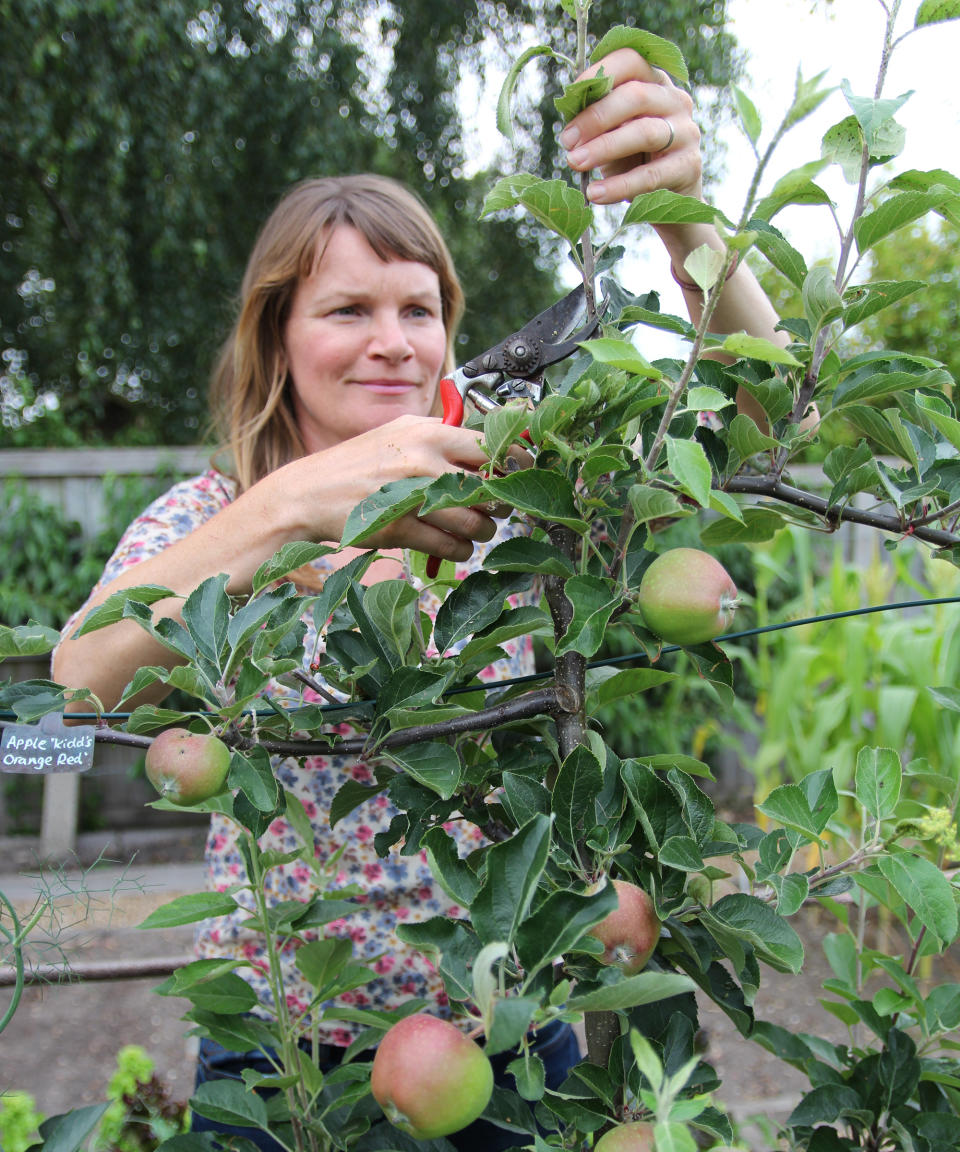
Can I prune fruit trees in winter?
Yes, many fruit trees need a winter prune, but avoid pruning cherries and plums and other stone fruits in winter as they’ll be vulnerable to silver leaf fungal disease, which favors damp conditions. Remember to learn how to clean pruning shears to keep them in tip top condition year after year and avoid spreading diseases from one plant to the next.

Which fruit trees should not be pruned?
Some fruit trees will not need pruning, so you might want to factor this into your decision when choosing a tree for your garden. These include: established quince, medlar, plum, mulberry and tip-bearing apple trees. These fruit tree varieties require little pruning, if at all.

